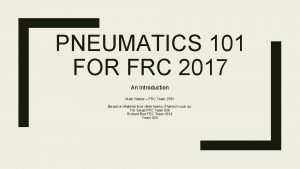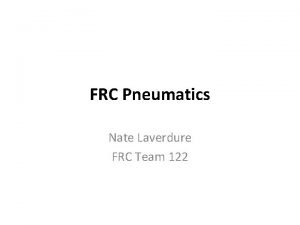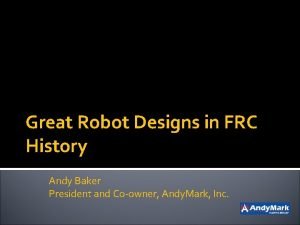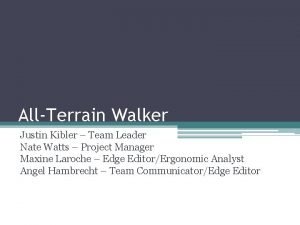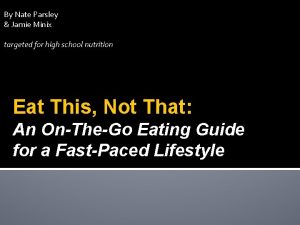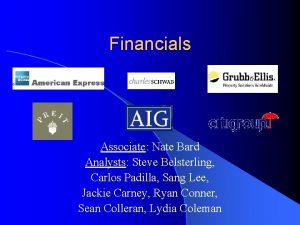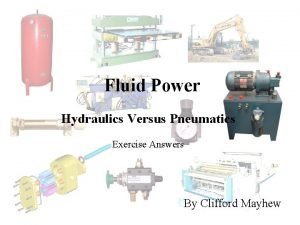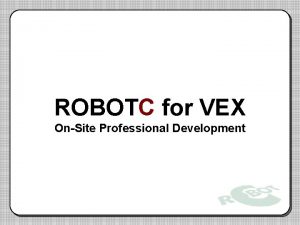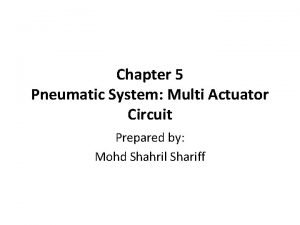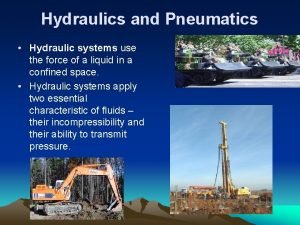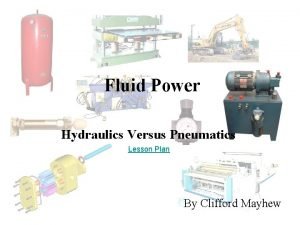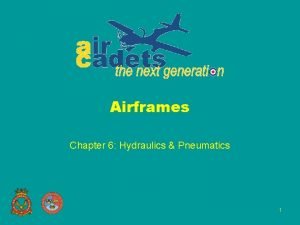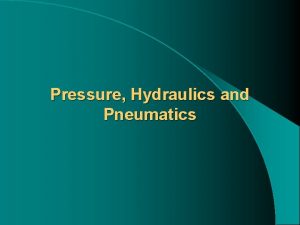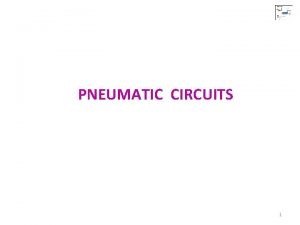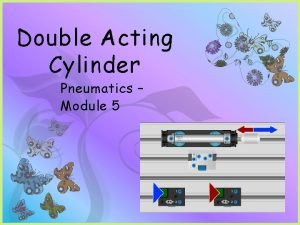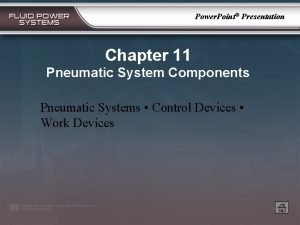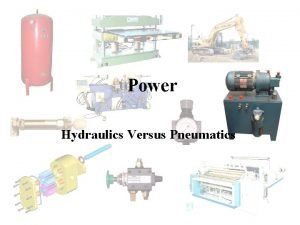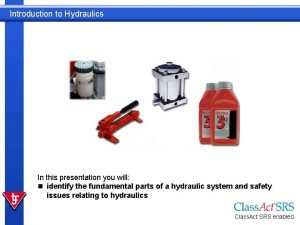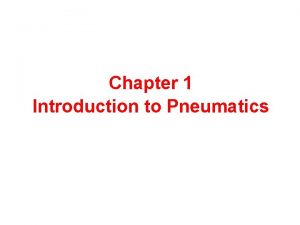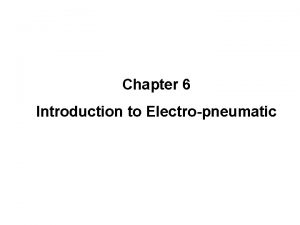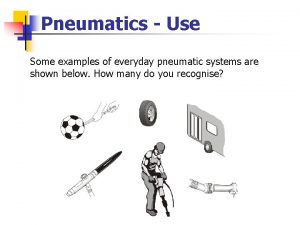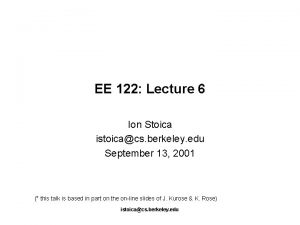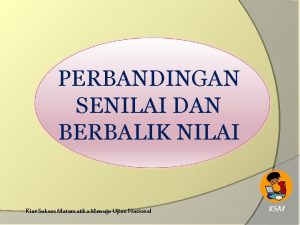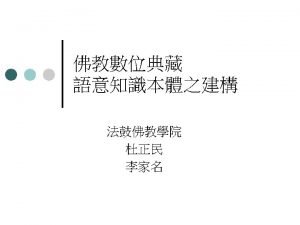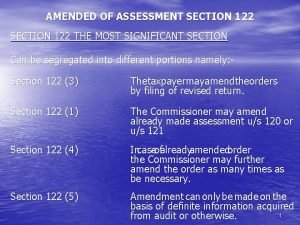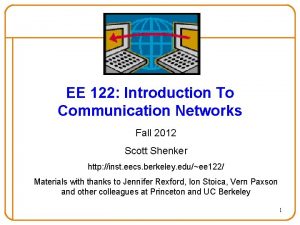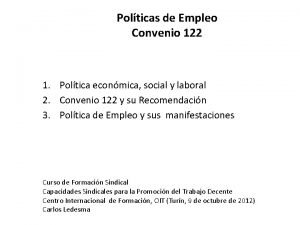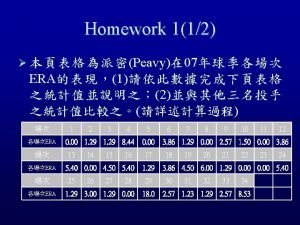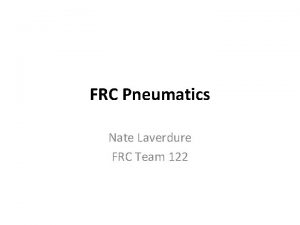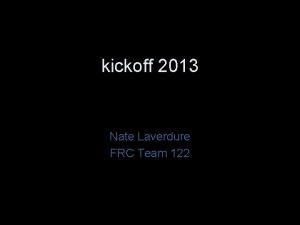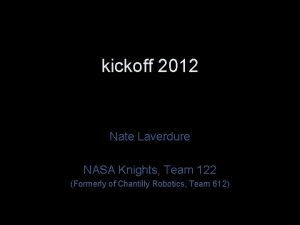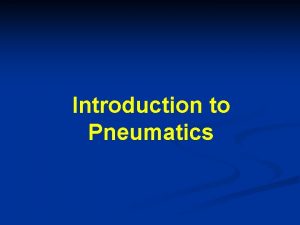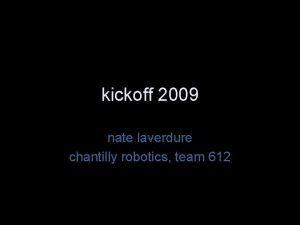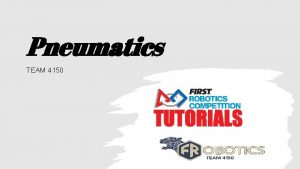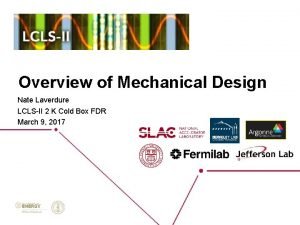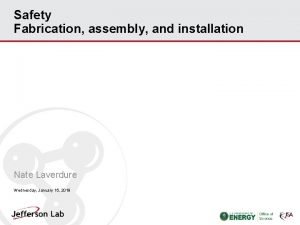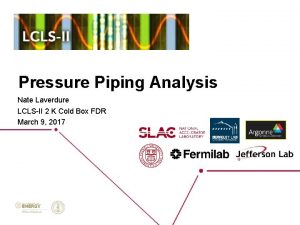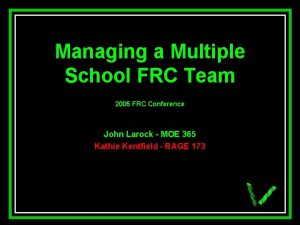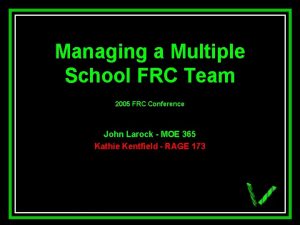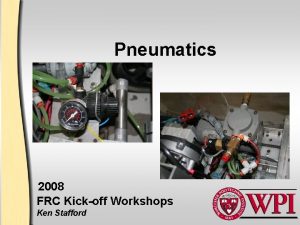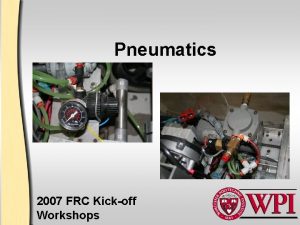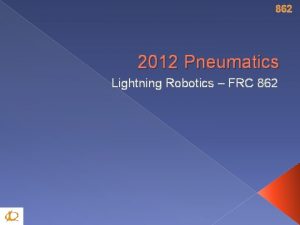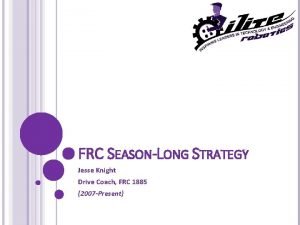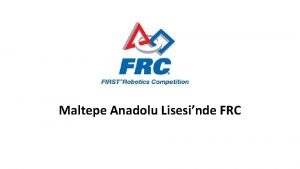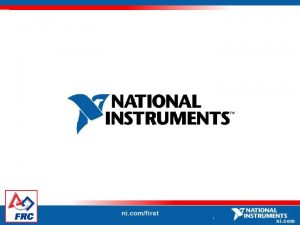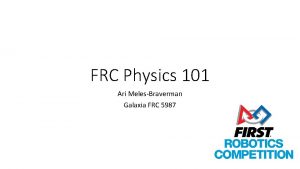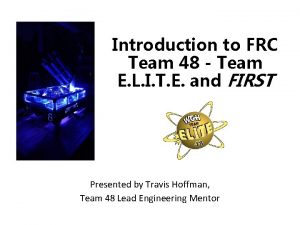FRC Pneumatics Nate Laverdure FRC Team 122 Everything



















































- Slides: 51

FRC Pneumatics Nate Laverdure FRC Team 122

Everything I wanted to know about FRC Pneumatics, but was afraid to ask Chief Delphi Nate Laverdure FRC Team 122

What is this presentation? Goals: • Teach you the words transducer, damper, and venturi

What is this presentation? Goals: • Teach you the words transducer, damper, and venturi • Attempt to: – Show that pneumatics have great advantages – if used correctly! – Provide a workable understanding of FRC pneumatics

What is this presentation? Goals: • Teach you the words transducer, damper, and venturi • Attempt to: – Show that pneumatics have great advantages – if used correctly! – Provide a workable understanding of FRC pneumatics My personal goal: inspire you to build your own pneumatic system!

What are pneumatics? Pneumatics use pressurized gas to effect a mechanical motion

What are pneumatics? Pneumatics use pressurized gas to effect a mechanical motion The working gas is typically air— 78% N 2 21% O 2 1% others

What are pneumatics? Other actuation systems: pneumatic pressurized gas hydraulic pressurized liquid electrical energy

What aren’t pneumatics? Closed-loop systems: • Pneumatic tires • Inflatable game pieces

What aren’t pneumatics? Closed-loop systems: • Pneumatic tires • Inflatable game pieces • Linear dampers (aka “gas shocks”)

Why should I use pneumatics? Strengths: • Linear motion • Adjustable force and speed • Good stall behavior (Can maintain high force, even with no motion) • Easy to configure • Low marginal weight

What is marginal weight? Weight Electric motors 1 2 3 Actuators 4 5

What is marginal weight? Weight Electric motors 1 2 3 Actuators 4 5

What is marginal weight? Weight Electric motors Marginal weight 1 2 3 Actuators 4 5

What is marginal weight? Electric motors Weight Pneumatics Break-even point High initial weight 1 2 3 Actuators 4 5

Why should I not use pneumatics? Weaknesses: • High initial weight • Severely limited available positions • Difficult to produce rotary motion • Capacity limits • Complex troubleshooting

Why should I not use pneumatics? Weaknesses: • High initial weight • Severely limited available positions • Difficult to produce rotary motion • Capacity limits • Complex troubleshooting Mitigations: • Add more actuators ‒ Decreases average weight per actuator • Use off-board compression ‒ Caution: more severe capacity limits!

Why should I not use pneumatics? Weaknesses: • High initial weight • Severely limited available positions • Difficult to produce rotary motion • Capacity limits • Complex troubleshooting Mitigations: • Either open or closed • No truly controllable multi-position actuators • Various hacks have come close ‒ Caution: may not be legal in FRC 2014!

Why should I not use pneumatics? Weaknesses: • High initial weight • Severely limited available positions • Difficult to produce rotary motion • Capacity limits • Complex troubleshooting Mitigations: • Bell crank or other linkage • Rotary actuator (turbine) ‒ Caution: severe capacity limits and extremely low torque!

Why should I not use pneumatics? Weaknesses: • High initial weight • Severely limited available positions • Difficult to produce rotary motion • Capacity limits • Complex troubleshooting Mitigations: • Use on-board compression ‒ Caution: weight penalty! • Use lower operating pressures • Use spring-return cylinders

Why should I not use pneumatics? Weaknesses: • High initial weight • Severely limited available positions • Difficult to produce rotary motion • Capacity limits • Complex troubleshooting Mitigations: • Know your system! • Create and maintain a flow diagram • Practice responding to common problems

FRC pneumatics system HP MP LP

FRC pneumatics system MP … HP Vacuum LP 1 LP 2 LP 3 LPn

FRC pneumatics system HP MP Compression Accumulation Safety Control … Subsystems: Vacuum LP 1 LP 2 LP 3 LPn Control Actuation

Compression subsystem Components: • Compressor CMP HP

Compression subsystem Components: • Compressor CMP HP Options: Viair Thomas Alternatives 2011 - 2013 2003 - 2010 ? ? ? - ? ? ?

Accumulation subsystem Components: • Accumulator HP TANK

Accumulation subsystem Components: • Accumulator HP TANK Options: ? Clippard Pneuaire Alternatives

Safety subsystem Components: • Pressure relief valve • Manual vent valve HP

Safety subsystem Components: • Pressure relief valve • Manual vent valve • Pressure relieving regulator – One on each leg • Pressure gauge HP HP MP MP LP – One on each leg

Safety subsystem HP HP MP MP LP

Control subsystem Pneumatic components: • Pressure switch • Solenoid valve c. RIO PS HP MP or LP

Control subsystem Pneumatic components: • Pressure switch • Solenoid valve c. RIO PS HP Electrical components: MP or LP • Spike relay • Digital sidecar • Solenoid breakout module (c. RIO)

Control subsystem c. RIO PS HP MP or LP

Diagramming the solenoid valve

Diagramming the solenoid valve Left actuator Position & flow boxes Right actuator

Diagramming the solenoid valve Left actuator Position & flow boxes Right actuator Piloted solenoid with manual override External pilot Solenoid Spring Detent Lever Push button

Diagramming the solenoid valve Left actuator Position & flow boxes Right actuator 2 -way 4 -way 3 -way 5 -way

Example

Example “This is a single-acting 4 -way, 2 -position solenoid valve with lever override. ”

Example

Example “This is a 4 -way, 3 -position, blocked center piloted solenoid valve with pushbutton overrides. ”

Actuation subsystem Components: • Cylinder – Double acting – Single acting (spring return) • Rotary actuator (turbine)

Actuation subsystem Components: • Cylinder – Double acting – Single acting (spring return) • Rotary actuator (turbine) • Vacuum actuator – Venturi – Suction cup

Actuation subsystem

Actuation subsystem Warning: Venturis require constant flow to maintain vacuum!

Bernoulli’s principle

Optional components c. RIO Pressure transducer Flow control valve PT

Optional components c. RIO PT

c. RIO PS CMP TANK HP TANK MP LP

FRC Pneumatics Nate Laverdure FRC Team 122
 Pneumatics frc
Pneumatics frc Frc pneumatics diagram
Frc pneumatics diagram Chief delphi ftc
Chief delphi ftc Nate plasch
Nate plasch Nate ramirez
Nate ramirez Nate monson iowa safe schools
Nate monson iowa safe schools Dr nate booth
Dr nate booth Naté dearden
Naté dearden Kathy goebel
Kathy goebel Justin kibler
Justin kibler Kimpton middle school
Kimpton middle school Nate rifkin
Nate rifkin Nate parsley
Nate parsley Nate conger
Nate conger Nate mantua
Nate mantua Nate bard
Nate bard Nate sabin
Nate sabin Pump exercise
Pump exercise Vex pneumatics
Vex pneumatics Pneumatic sequence
Pneumatic sequence Pneumatic cylinder basics
Pneumatic cylinder basics Hydraulics and pneumatics
Hydraulics and pneumatics Fluid power hydraulics and pneumatics
Fluid power hydraulics and pneumatics Advantages of hydraulic
Advantages of hydraulic Pascal's law pneumatics
Pascal's law pneumatics Function of single acting cylinder in pneumatic system
Function of single acting cylinder in pneumatic system Function of double acting cylinder
Function of double acting cylinder Pneumatic valves ppt
Pneumatic valves ppt Hydraulics vs pneumatics
Hydraulics vs pneumatics Hydraulic presentation
Hydraulic presentation Pneumatics
Pneumatics Simple electro pneumatic circuit
Simple electro pneumatic circuit Hydraulics & pneumatics
Hydraulics & pneumatics Pneumatic energy examples
Pneumatic energy examples The white team cheers for the blue team, just like
The white team cheers for the blue team, just like Team spirit becomes team infatuation
Team spirit becomes team infatuation Team spirit becomes team infatuation
Team spirit becomes team infatuation Ion stoica
Ion stoica Harga 3 lusin pensil 45 harga 32 pensil tersebut adalah
Harga 3 lusin pensil 45 harga 32 pensil tersebut adalah Texto en tercera persona
Texto en tercera persona Hyponomy
Hyponomy Psalm 68:5-6
Psalm 68:5-6 Ee 122
Ee 122 Section 122(9)
Section 122(9) Nec 250 122
Nec 250 122 Psalm 24:5-6
Psalm 24:5-6 Ee 122
Ee 122 In ip addressing, an address beginning with 122 is
In ip addressing, an address beginning with 122 is Convenio 122 oit
Convenio 122 oit Homework 122
Homework 122 Abseetism
Abseetism Articulo 122 lottt
Articulo 122 lottt
